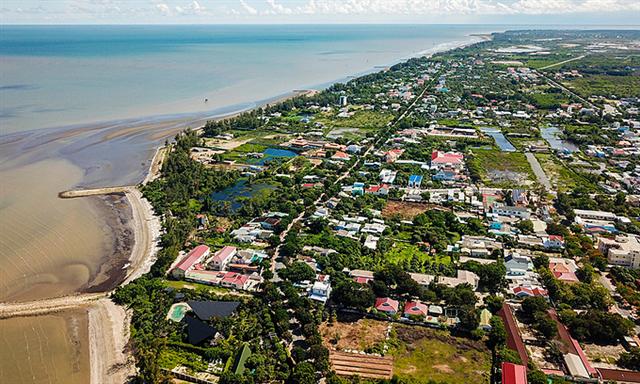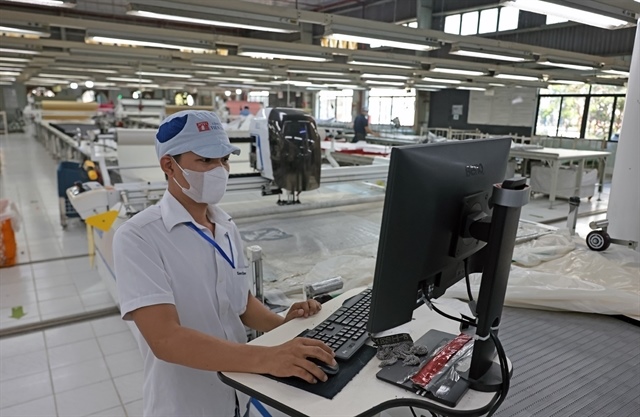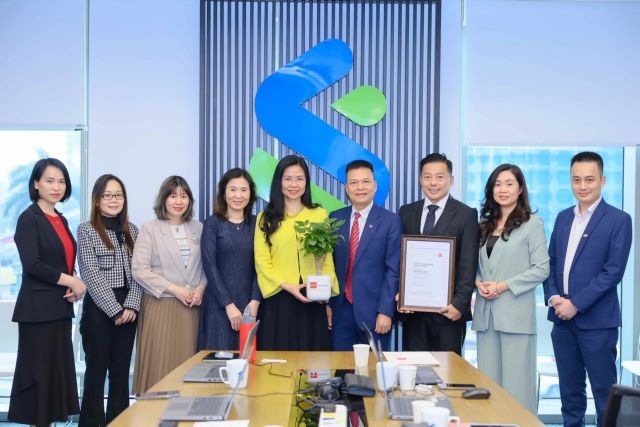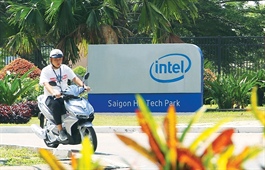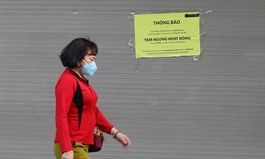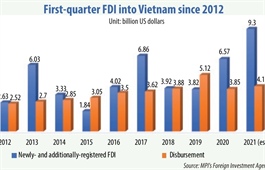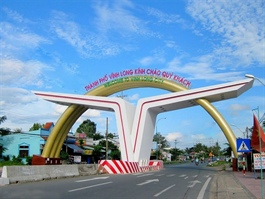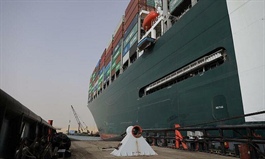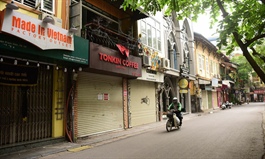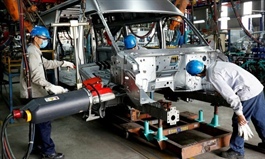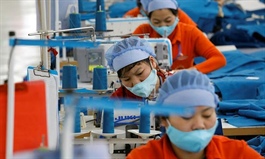HCMC floats marine economy as new development pillar
HCMC floats marine economy as new development pillar
The Can Gio Bay should help HCMC leverage a switch from a land-based to a sea-based economy, municipal officials say.
The coastal Can Thanh Town of Can Gio District, HCMC, July 2020. Photo by VnExpress/Quynh Tran.
|
"Developing towards the sea has been a desire of generations of leaders and people of HCMC. Identifying a strategic direction for the city to develop its marine economy and have marine urban areas connected with the global and regional economies has become an urgent need now," municipal vice chairman Vo Van Hoan said at a conference Tuesday.
He said the future model for economic growth for HCMC requires regional connections to boost its marine economy, linking sea ports with marine urban areas.
In particular, Can Gio Bay was an "opportunity" to create a turning point and change the development mode for the city, allowing it to switch from land-based growth to sea-based growth, Hoan stressed.
The Can Gio tourist urban area will be a new driving force for the city to thrive, he added.
As a coastal locality, HCMC accounted for more than 37 percent of the total gross domestic product (GRDP) of all coastal cities and provinces; its foreign direct investment (FDI) made up more than 25 percent of the total FDI in such localities, and nearly 11 percent of all localities in the country last year, said Nguyen Duc Hien, deputy head of the Central Economics Committee.
The government has been paying increasing attention to developing the marine economy and marine urban areas, he said.
The Party Central Committee’s Resolution 36, passed in 2018, targets that by 2030, the marine economy will contribute about 10 percent to the national GDP and the economic growth of 28 coastal provinces and cities will account for 65-70 percent.
The resolution envisages that by 2045, Vietnam will become a powerful, prosperous, secure maritime country with sustainable development.
Hoan said the HCMC administration is looking forward to hearing what experts think about the role and importance of sea encroachment and marine urbanization in comparison with what other countries have done.
"We hope that experts will propose tasks and solutions to promote marine economic development of Can Gio in accordance with the Can Gio sea reclamation project."
The sea reclamation project was approved by Prime Minister Nguyen Xuan Phuc last June. The project includes an urban tourist area in the city's outlying Can Gio District.
The project will be carried out on a total area of 3,000 hectares (7,400 acres) at an estimated cost of VND217 trillion ($9.4 billion).
Luu The Anh, head of the Central Institute for Natural Resources and Environmental Studies under the Vietnam National University, Hanoi, said that along with the port and airport systems nearby, including the Cat Lai Port in District 2, Hiep Phuoc Port in Nha Be District and Long An Port in HCMC’s neighbor Long An Province, as also the Long Thanh Airport, which will be built in Dong Nai Province, another locality bordering HCMC, Can Gio Bay will be a driving force for HCMC’s economic development.
‘Urban sea chain’
This bay area has all the potentials and advantages to form a "urban sea chain" when it is connected with Vung Tau in Ba Ria-Vung Tau Province, another HCMC neighbor, and Go Cong Town in Long An Province, Anh said.
Home to the Can Gio Mangrove Biosphere Reserve and having a beach-front area stretching 42,000 square kilometers in total, Can Gio Bay has all the conditions to become a modern marine urban center and an eco-tourism area of regional and international scale, he said.
"However, the problem of analyzing costs, benefits and economic efficiency should be considered carefully from different angles to ensure the highest efficiency when HCMC takes advantage of the bay for economic development," he said.
Nguyen Chu Hoi, former deputy head of the Vietnam Administration of Sea and Islands, said Vietnam has not exploited the full potential of its coastal area and islands. He felt that the country should soon complete a network of marine urban area chains and assert itself as a "marine nation."
Lying 50 km from the city’s center, Can Gio is the only district of HCMC bordering the sea, with a coast length of 23 km. The district has an area of more than 71,300 hectares, 70 percent of which is taken by mangrove forests and waterways.


